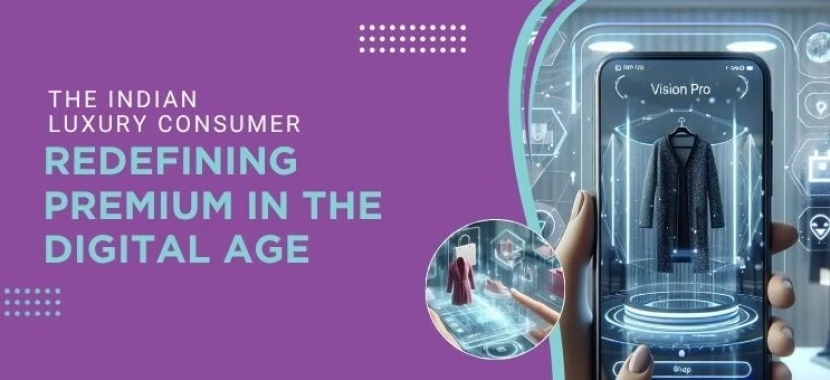Priya, a 28-year-old tech consultant from Bangalore, starts her Saturday by booking a wellness retreat in Kerala through an Instagram story, orders a customised saree from a Delhi designer via WhatsApp, and ends her day researching sustainable jewellery brands for her upcoming engagement. Her luxury shopping journey spans three cities, two platforms, and multiple value-driven decisions, all before lunch.
This isn’t an unusual day for India’s new luxury consumer. It’s the new normal that’s reshaping how brands think about premium experiences in the world’s youngest major economy.
The Youth Revolution: Numbers That Matter
India’s demographic advantage isn’t just statistical, it’s transformational. With an average age of 31 by 2030, the country boasts one of the world’s youngest populations, precisely when luxury spending power is peaking. This isn’t merely about age; it’s about attitudes, aspirations, and entirely different approaches to luxury consumption.
Millennials and Gen Z are projected to represent over 75% of India’s luxury consumer base by 2030, driving market growth from ₹1,47,000 crores in 2024 to an estimated ₹7,00,000 crores by the decade’s end. These aren’t passive inheritors of luxury traditions; they’re active creators of new luxury paradigms.
Beyond Status: Luxury as Self-Expression
Where previous generations viewed luxury as status validation, today’s Indian consumers see it as identity articulation. The traditional luxury equation, expensive equals aspirational, has evolved into something more nuanced and personally meaningful.
Achievement-Oriented Purchasing: Rising incomes across Indian cities have created confident consumers who view luxury as celebration of personal success rather than borrowed status. A software engineer’s first Rolex isn’t about impressing others; it’s about marking a professional milestone.
Digital-First Discovery: India’s massive digital population, over 750 million internet users, approaches luxury through online research, social media inspiration, and community recommendations. They’re as likely to discover their next luxury purchase through Instagram as through traditional advertising.
Cultural Confidence: Modern Indian consumers seamlessly blend global luxury with local pride, equally comfortable purchasing international brands and supporting Indian designers who celebrate traditional craftsmanship.
Experience Economy: Creating Memories Over Collections
The shift from possession to experience represents perhaps the most significant change in Indian luxury consumption. Today’s consumers prioritise stories they can tell over objects they can display.
Curated Experiences: From private cooking classes with celebrity chefs to exclusive access to art exhibitions, experiential luxury is booming across Indian cities. Hotels like The Oberoi and Taj are creating bespoke experiences that transform stays into stories.
Personalisation Expectations: Mass luxury feels contradictory to this generation. They expect customisation, whether it’s monogrammed leather goods, tailored travel itineraries, or jewellery designed specifically for their aesthetic preferences.
Cultural Fusion: The most successful luxury experiences blend international standards with Indian sensibilities. Think heritage hotel stays that combine global luxury hospitality with authentic regional culture.
Global Outlook, Local Pride
Perhaps nowhere is India’s evolving luxury landscape more apparent than in consumers’ simultaneous embrace of international brands and celebration of Indian heritage.
International Comfort: Young Indian consumers navigate global luxury with remarkable ease. They’re as comfortable shopping at Galeries Lafayette in Paris as at Palladium in Mumbai, understanding luxury languages across cultures.
Heritage Renaissance: There’s renewed appreciation for traditional Indian crafts, but reimagined for contemporary lifestyles. Brands like Sabyasachi and Anita Dongre succeed by honouring tradition whilst speaking to modern sensibilities.
Cross-Cultural Innovation: The most exciting developments occur when global luxury meets Indian creativity, international brands creating India-exclusive collections or Indian designers gaining international recognition.
Conscious Luxury: Values-Driven Consumption
Sustainability isn’t peripheral to Indian luxury consumption; it’s increasingly central. This generation refuses to compartmentalise their values, expecting luxury brands to align with their environmental and social consciousness.
Ethical Expectations: Consumers increasingly research brands’ sustainability practices, labour conditions, and social impact before purchasing. Transparency isn’t optional; it’s essential for building trust.
Premium for Purpose: Indian consumers willingly pay premiums for products that align with their values. Brands demonstrating genuine commitment to sustainability, fair trade, or social causes find receptive audiences.
Local Impact: There’s particular appreciation for brands that support Indian artisans, preserve traditional crafts, or contribute to local communities.
Digital Transformation: Shopping Without Boundaries
India’s luxury retail is experiencing unprecedented digital transformation. Over 57% of Indian luxury consumers now shop via social media, significantly above global averages, fundamentally changing how brands reach and engage customers.
Social Commerce Integration: Instagram shopping, WhatsApp customer service, and influencer recommendations have become integral to luxury retail. Brands succeeding in India master these digital touchpoints.
Omnichannel Expectations: The distinction between online and offline luxury retail is disappearing. Consumers expect seamless experiences whether they’re browsing on mobile apps, visiting flagship stores, or attending virtual brand events.
Looking Forward: The New Luxury Standard
India’s young luxury consumers aren’t simply adapting to global trends; they’re creating new standards that influence international luxury markets. Their preferences for personalisation, sustainability, and experiential value reshape how luxury operates globally.
The brands succeeding in India today understand that luxury isn’t about exclusion; it’s about inclusion in extraordinary experiences. They recognise that young Indian consumers want to feel special, not separate; celebrated, not simply served.
Ready to understand and lead this transformation? LCBS prepares you to navigate India’s dynamic luxury landscape, where tradition meets innovation and local insights shape global strategies.







